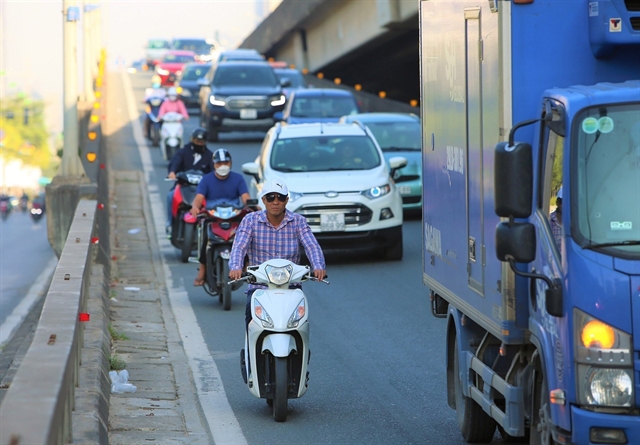
Car ownership is becoming more and more common across Việt Nam. VNS/VNA Photo Phạm Kiên
Seán Nolan
HÀ NỘI Though a relatively new phenomenon, car ownership in Việt Nam is becoming more and more common as the country's middle-class grows. However, concerns must be addressed regarding the consequences of so many more cars on our roads.
In 2020, just 5.7 per cent of Vietnamese households owned a car. Asia Perspective predicts that the number will reach 9 per cent by 2025, and a whopping 30 per cent by 2030, equivalent to the current level of India and the Philippines.
As well as a growing middle-class, favourable policies have helped drive this growth. For example, from the beginning of December 2021, the Ministry of Finance announced a 50 per cent reduction in registration fees for domestically-assembled cars, and 100 per cent for electric cars.
The finance ministry forecasts that car sales are set to rise by 22.6 per cent each year from now until 2025, and by 18.5 per cent in the years following.
All of this seems like net positives, indicators of a country on the up.
However, caution must be thrown to the wind.
Simply put, I am not convinced that the road infrastructure in Việt Nam is ready to cope with this rapidly-increasing number of four-wheeled vehicles on the road - at least not without major congestion.
Of course, Vietnamese cities aren’t alone in facing this problem; far from it.
In a bid to reduce traffic, in 1982 Athens introduced the dactylius (ring) around its city centre. Cars can only enter this area on certain days, dictated by the last digits of their number plate, limiting the number of cars in the centre.
Similar permanent policies have since been adopted in Bogota, Jakarta, Mexico City, San Jose, Santiago and Sao Paulo.
Introducing a ‘road space rationing’ policy in cities in Việt Nam would undoubtedly be controversial. Some would argue that it would negatively affect the appeal of owning a car in the first place, if it can only be used to enter certain parts of the city on certain days.
However, I would argue that is the point. While some of the cities above introduced road space rationing legislation to prevent congestion, the majority introduced it to reduce pollution, which Việt Nam could certainly use a bit of too.
To encourage this, electric vehicles could be exempt from the congestion regulations. VinFast is Việt Nam’s largest domestic car producer, and their recent pivot towards electric vehicles would complement this policy.
Việt Nam is known around the world as the country of 100 million motorbikes, a moniker that isn’t far off the mark. However, Việt Nam cannot become the country of 100 million, or even 50 million, cars – not without congestion getting a lot worse anyway.
OVietnam